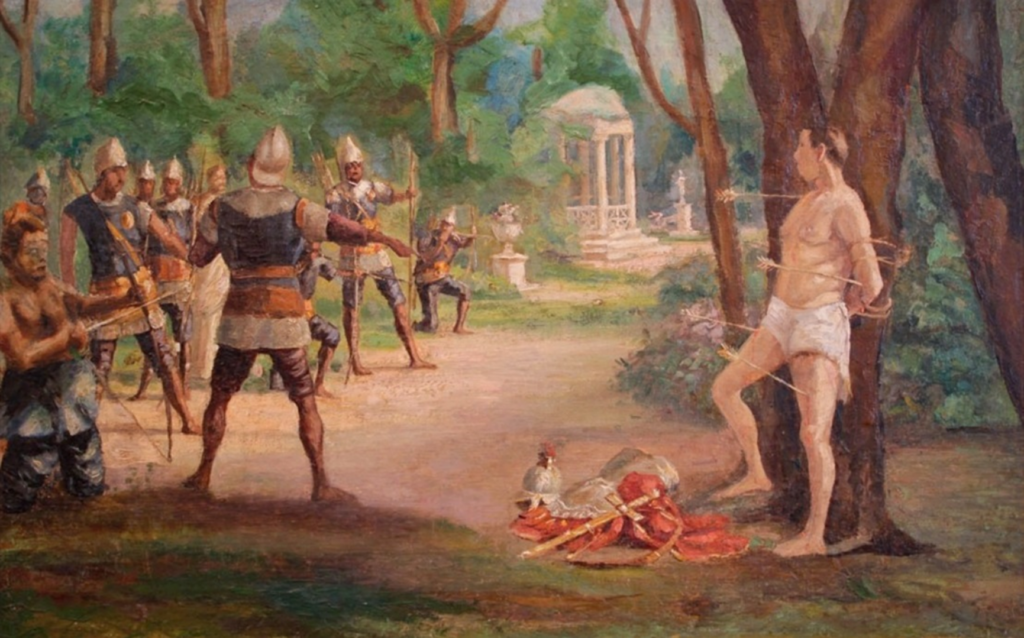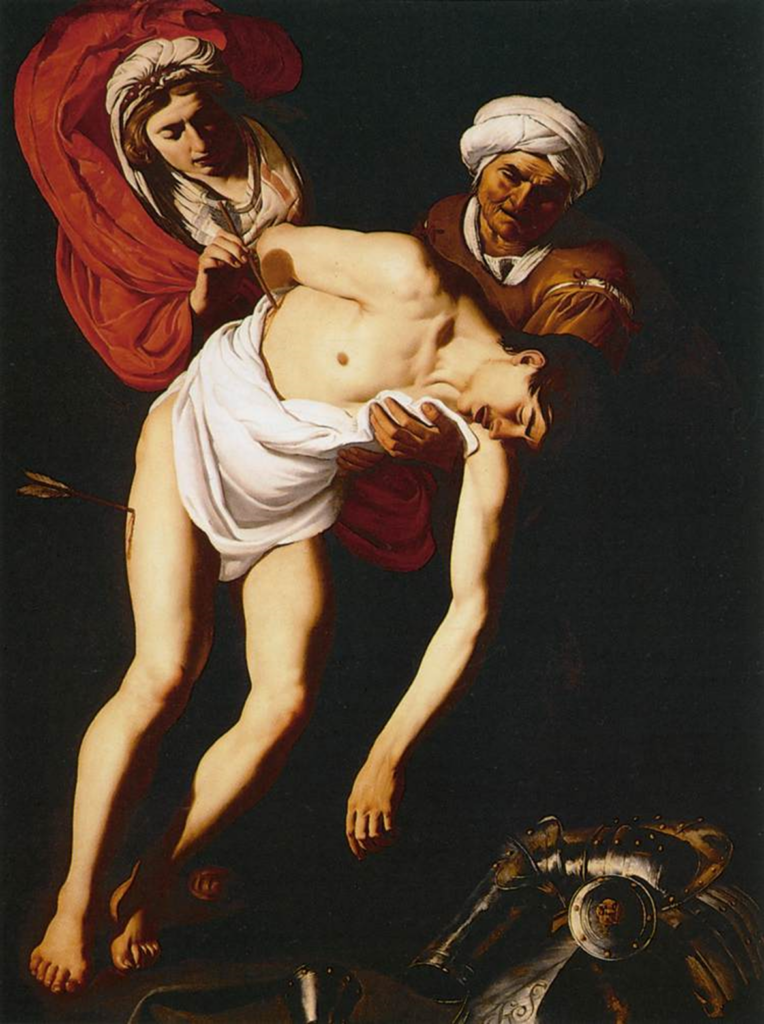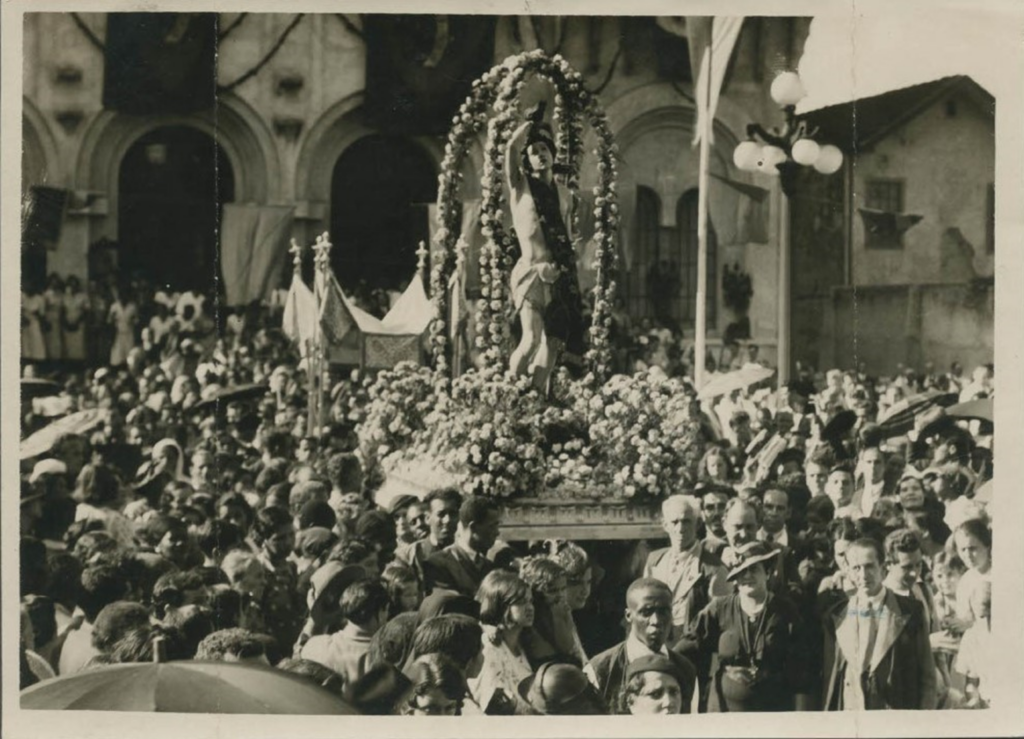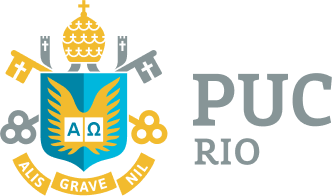Monument of Saint sebastian
– LUÍS DE CAMÕES square – GLÓRIA
Listen to Saint Sebastian´s story.
A seven-metre high statue stands in the Luís de Camões Square in the neighbourhood of Gloria. It was made by Dante Croce, of Niteroi, to pay tribute to the patron saint of the city, Saint Sebastian.

When the coloniser and founder of Rio de Janeiro landed in the Guanabara Bay, he ordered the building of a chapel to pay tribute to Saint Sebastian, to whom he was devout. The city was christened São Sebastião do Rio de Janeiro, and in this way paid tribute to the saint who became its patron saint and also to the young Portuguese monarch, Dom Sebastião, who was born on the same day as Saint Sebastian (20 January).

It is said that in July 1566, during the Battle of the Canoas, an apparition of the Catholic saint wielding a sword is believed to have assisted the Portuguese victory against the Franco-Tamoia alliance. Furthermore, it was on the day of Saint Sebastian that the Portuguese finally expelled the French from Rio de Janeiro, after winning the Battle of Uruçumirim on 20 January 1567 in the present-day neighbourhood of Glória, where the statue stands. Coincidentally, it was during this battle that Estácio de Sá was wounded by a poisoned arrow which led to his death a few weeks later. His body was buried in the same chapel he had had built when the city was founded. Arrows are also an important part of the saint’s history. Although his body is usually depicted pierced by arrows, he was beaten to death in the 3rd century.

Sebastian, born in the year 256, was of French origin. Sebastian went to Milan as a child. When he was young, he enlisted in the Roman military and rose to the rank of captain of the Praetorian Guard — responsible for the personal protection of the emperor. During this time, Christianity was prohibited, and Christians were persecuted. Sebastian, being a Christian himself, used his position to provide comfort to prisoners who shared his faith. However, he was discovered by the emperor Diocletian, who ordered his execution by arrows. Sebastian survived and was rescued by a Christian woman — who would later be canonized as Saint Irene of Rome.

Once he had recovered, he once again approached the emperor to request the end of the persecution of Christians. Diocletian ignored his pleas and ruthlessly ordered Sebastian be beaten to death and his body thrown in the city sewers.
The martyrdom of Saint Sebastian led to him being acclaimed as a saint by the multitude of Christians who witnessed his death. However, his official canonisation took place only in the 4th century, after Emperor Constantine (306-337) granted the freedom to worship Christ.

The monument in Luís de Camões Square was inaugurated in the year that marked the celebration of the IV Centenary of the city’s foundation, in 1965. The intention was for the inauguration to take place on January 20 — the day consecrated to the saint. However, on the day, a half-sized plaster mould substituted the official statue due to a delay in its completion. The sculpture was installed months later.
















